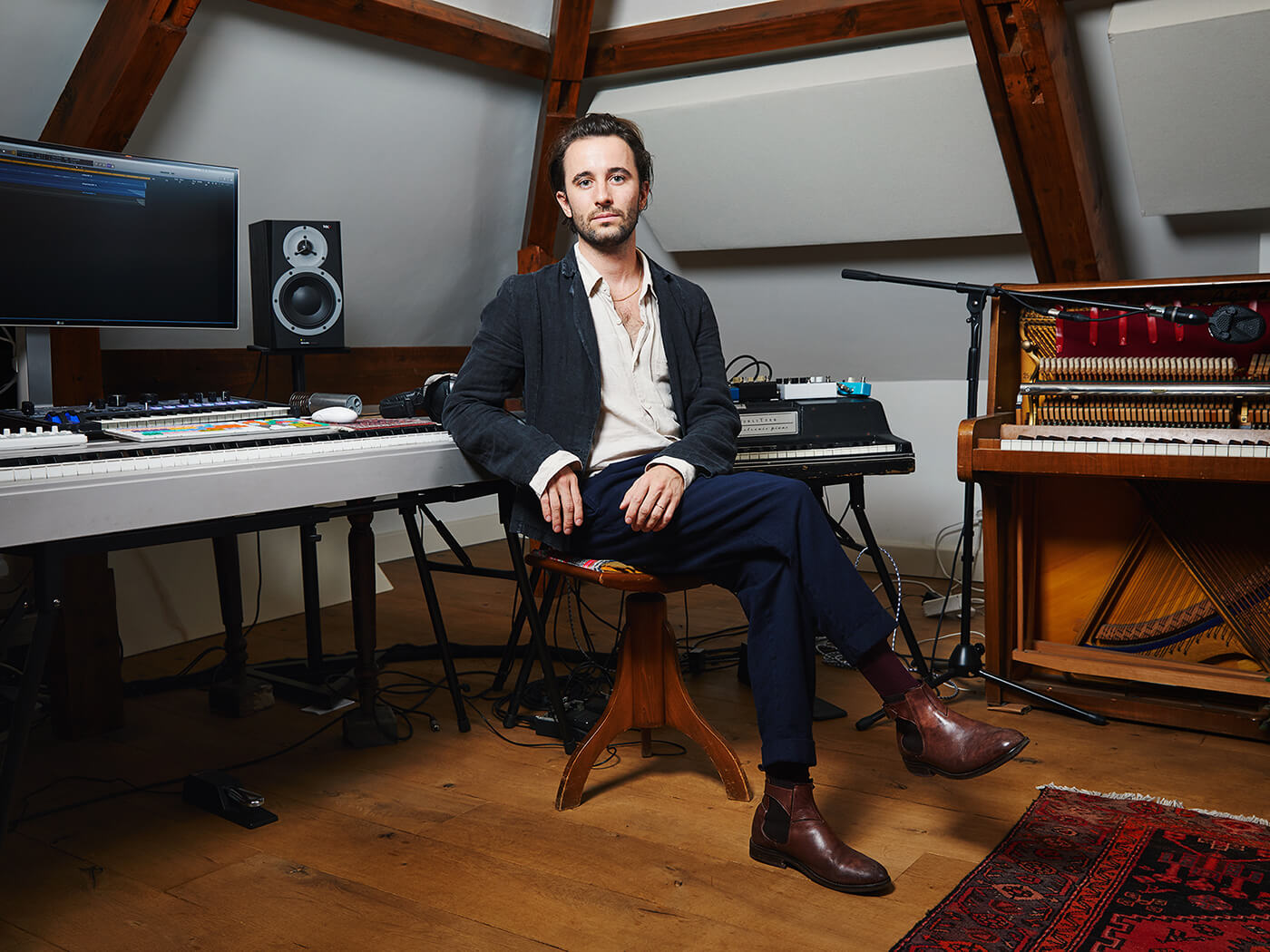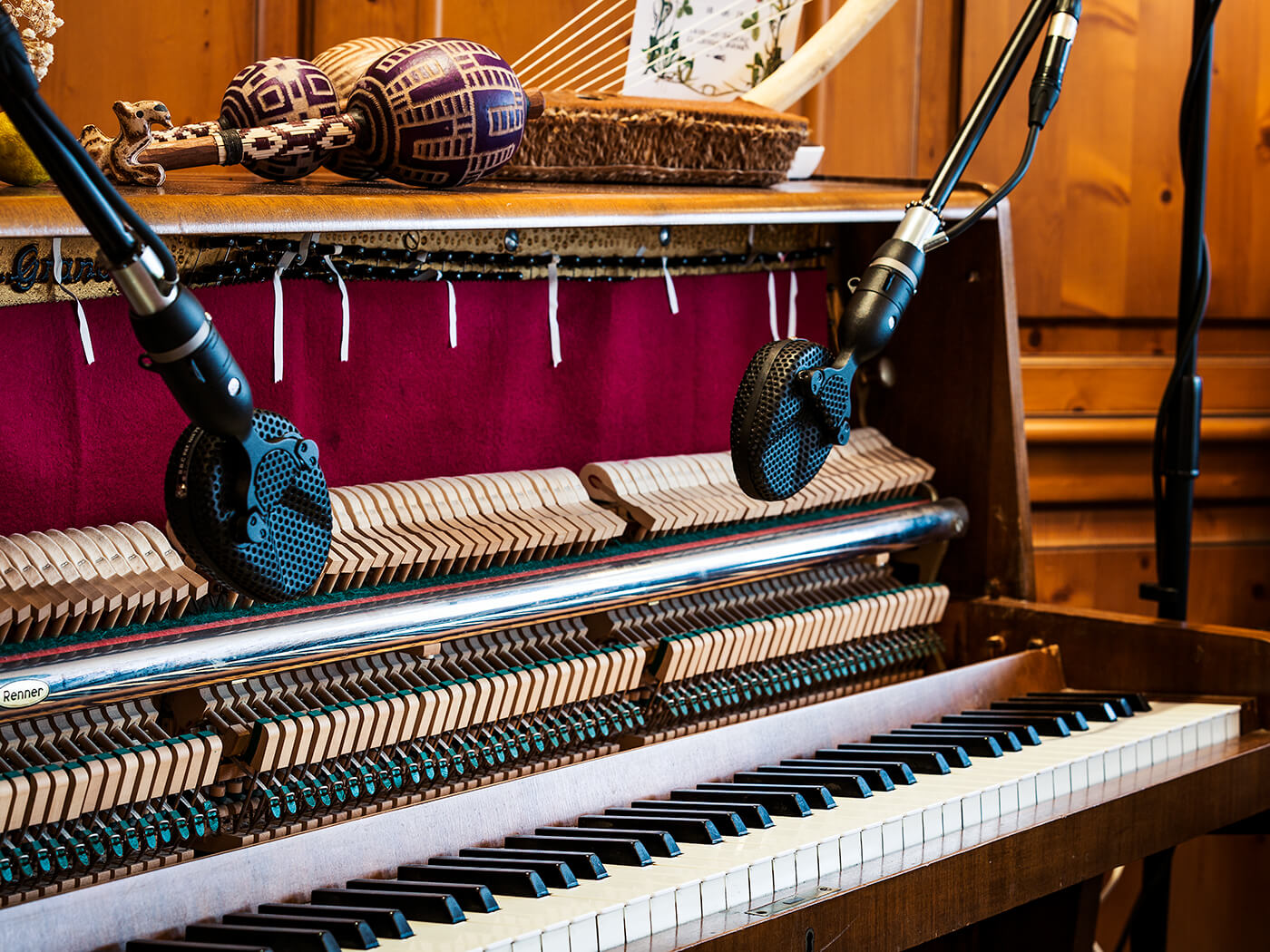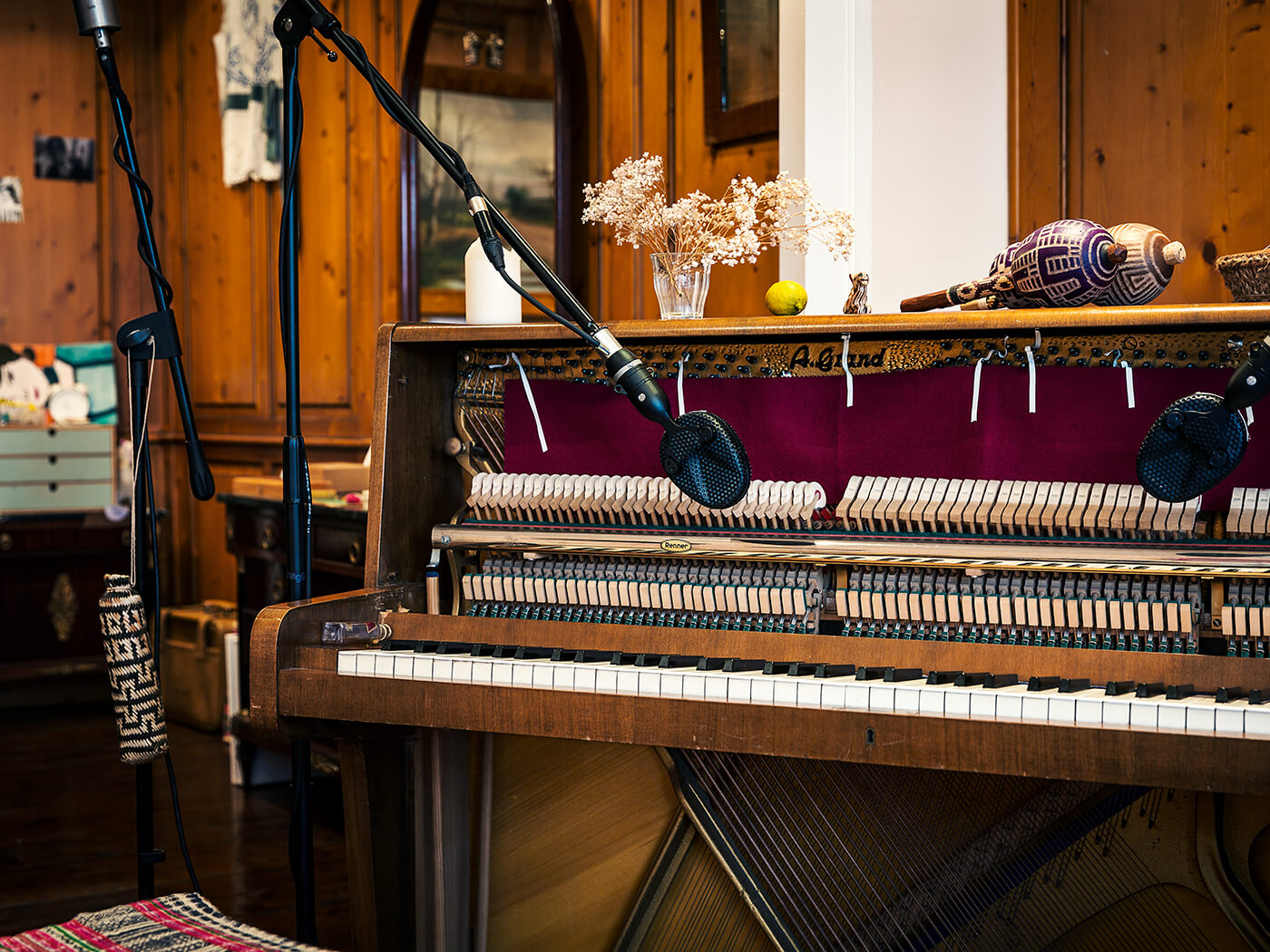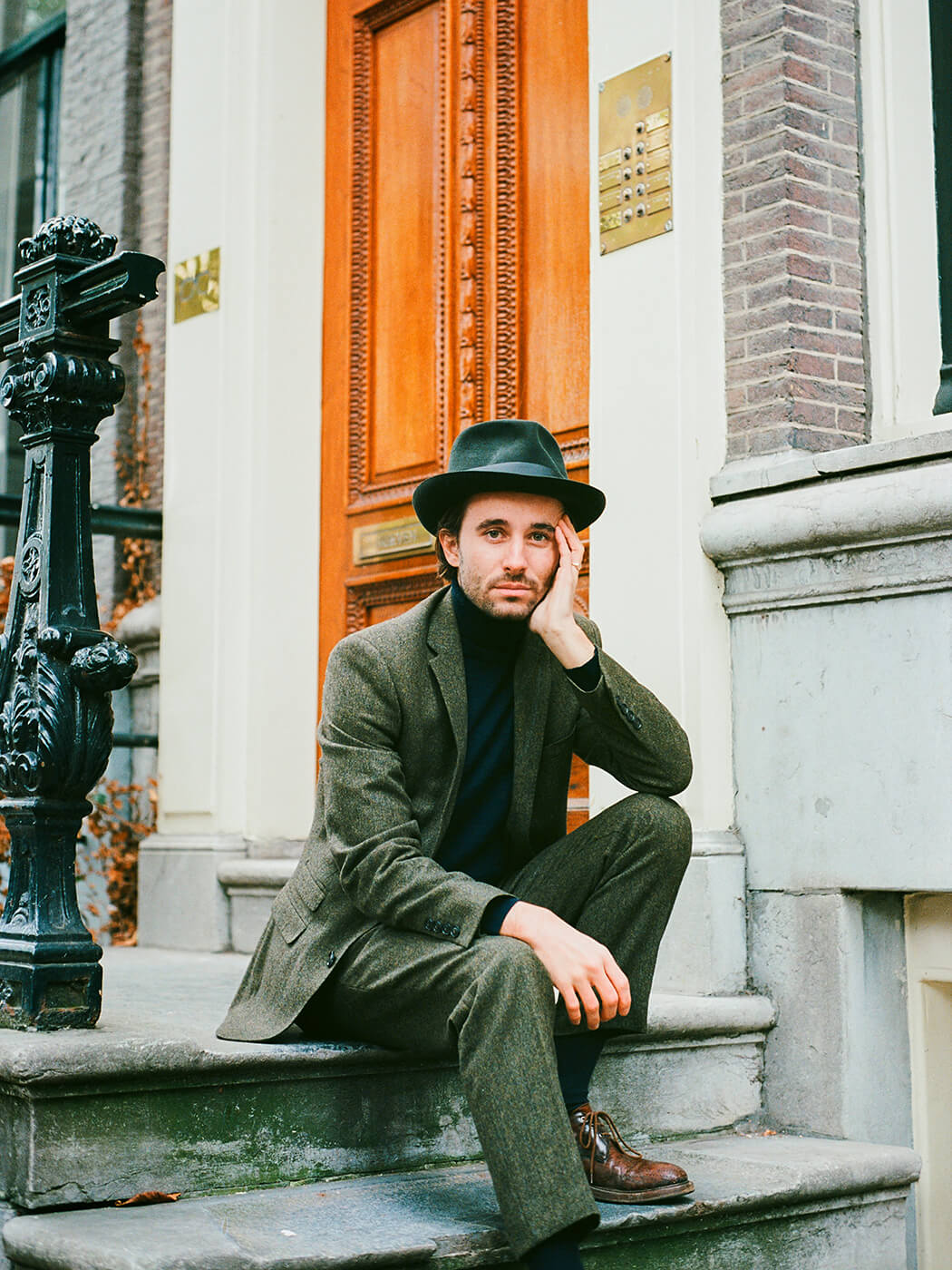Composer Oliver Patrice Weder discusses his composing process and working with sample pioneers Spitfire Audio
Oliver Patrice Weder has forged a multi-faceted career scoring film and TV projects, working as lead composer for Spitfire Audio and somehow finding the time to write original music. We speak to Weder about spinning plates and the differences between his many processes.

Though he hails from a small town in Switzerland, the trajectory of composer Oliver Patrice Weder’s career has been shaped by extensive travels across Africa, Europe, and North and South America. He has concentrated these experiences into a penchant for vibrant, soul-tingling music, and has seized opportunities in the world of music technology, establishing himself as a lead composer at the ever-expanding Spitfire Audio.
His debut record OPW features an array of instrumental textures. It’s been released by SA Recordings, Spitfire’s innovative own label, and comes accompanied with a sample pack that allows listeners to incorporate his characterful sounds into their own tracks. Weder is also an accomplished soundtrack composer for film and television, having scored feature films The Haunted and Low Notes, as well as short films and documentaries. He tells us about balancing these disciplines and how he maintains his multi-pronged career in the industry.
Thanks for speaking to us, Oliver. Let’s start at the beginning. How did your passion for music-making begin?
I’m from Switzerland. And in Switzerland, when you go to primary school, you have to choose an instrument. Everyone suggested the recorder, which was very much the default, but for some reason I went with the piano. I mean, it just sounds way nicer, for one thing. But the real moment for me came a bit later, when I watched the film Forrest Gump when I was about 12 years old. There was a track by The Doors used during the Vietnam segment, Break On Through (To The Other Side). I loved it. I asked my dad what it was, which led him to reveal to me his vinyl collection. That’s really when the obsession began and one of my earliest recollections of really falling in love with music. I developed a bit of an obsession with Charlie Chaplin and the music used in the film The Kid.
I learnt all The Doors’ tunes pretty quickly. I emulated Ray Manzarek’s approach of playing all the bass parts with his left hand and the organ and lead parts with his right. I then got into more blues and jazz, and really started learning piano from there.

Did you start writing your own compositions soon after that?
When I was 15 or 16 I started playing in some blues bands. At that time, I was playing football as my main thing, and music was kind of my hobby. But I injured my ligaments – I was on crutches and couldn’t go out. That’s when it switched for me and music became my number-one. I was playing piano for nine hours a day. I learnt loads of songs by Miles Davis, Bill Evans, and all that sort of stuff. I also joined more bands and toured extensively across Europe.
When I was 20, I moved to Brighton because – as a European – England has such a legacy and reputation for music. London was too expensive for me. I went to BIMM Brighton, which was interesting, and had some really cool teachers. But for me, that time was more about building my contacts. As a keyboard player, I was quite in demand from the many guitarists there.
I was writing my own piano pieces at that point, writing for bands and for myself. At some point, a friend asked if they could use one of my piano pieces for their student film project – it was kind of like an art film – which I was completely fine with. He came back a few weeks later and told me he’d love it if there was cello on the track. I wasn’t a cello player though, so I got hold of Logic and just used some of the preset string sounds to add to the track. That was my first experience of writing to picture and I remember absolutely loving it.
Taking flight
How did your journey lead you to Spitfire Audio? And how has your partnership developed?
I’d only had that one experience of writing to picture. After my course, I felt I needed to get out for a bit. I applied at a couple of universities that specialise in film scoring because I was desperate to learn more about it. I eventually got in to Valencia’s Berklee College of Music
They expected a lot of pre-existing knowledge and I didn’t have a lot of experience with Pro Tools or Logic at that point, so it was quite challenging initially. But I spent my nights just learning everything there was to know about DAW recording and navigating them, catching up to the other students.
When I was doing my master’s thesis, we had a visit to Spitfire Audio HQ. I remember Spitfire co-founder Christian Henson telling us about his career in music. He is an absolutely fascinating guy. After the course, I moved back to the UK and based myself in London. I was financially in the red for a short while but I attended a festival called Tune Up, organised by the Production Music Awards. I met Christian again.
He was giving a talk there. He strongly advised me to go travelling before I had kids but, at that time, I just wanted to settle down for a bit as I’d just moved back from Valencia. I semi-jokingly asked if there was any work going at Spitfire Audio. Christian thought for a moment, said, ‘Yeah, actually,’ and gave me his card. That’s how the Spitfire adventure started. It was being in the right place at the right time – and luck, of course.
When I started, there were about seven people, now there’s 70. Initially, I was helping Christian write some percussion arrangements and cleaning up tracks, acting on director’s notes and that kind of thing. But I showed a lot of interest and sacrificed a lot. I worked weekends and would leave work really late. In this industry, you have to demonstrate your engagement but also be easy to work with. Over time, I created my own job at Spitfire – as a music production lead. I was responsible for creating all the music that went out for teasers, trailers and demos.
Aside from your Spitfire duties and your music-for-picture work, you’re also a composer and artist in your own right. What defines your sound? Do you occupy a specific genre?
It’s tricky to describe the ‘Oliver sound’. I’m lucky in that I work at Spitfire and music-making isn’t my bread and butter. That lack of pressure enables me to be more relaxed about making music the way I want to make it. The sound on OPW is raw, honest, elegant yet experimental – it’s a cross between several genres and takes you on a journey. You can hear the influences on the album: the piano playing is heavily influenced by Ray Manzarek, Chilly Gonzales and Idan Raichel, whereas the string sound and arrangements lean on contemporary classical composers such as Ólafur Arnalds, the LCO and Mica Levi.
My album is entirely based on piano, because at heart I’m a pianist. Some of my compositional approach has a blues-jazz background, with West African, bossa nova and classical influences too. My style is raw and intuitive. In fact, the bonus material I released recently is called Epilogue and it’s just a few piano pieces that I improvised one night. I was planning on re-recording them later but, listening back, I realised that I like the spontaneity of it. More music should be made that way. It’s almost like taking a photograph.
There’s an affected Wurli sound throughout the album, which, mixed with the other elements, gives my sound a unique touch. Those kinds of sounds were coming out of countless hours of experimenting and tweaking in my studio until I found something I liked. For this, I mainly used a collection of Strymon pedals. Here and there, I incorporated some rhythmical elements inspired by the West African music I listen to.
There’s some drum machine elements too. I got hold of an Ace Tone Rhythm Ace, a precursor to Roland and one of the first-ever drum machines, which features on the track Naturally. I’d love to get my hands on a Maestro Rhythm King but those old machines are pricey and sometimes not very useful in a modern setup.

My favourite arrangement is the one in A Night In Santa Teresa. I play a simple melody on the piano, which is doubled by a solo cello and later by a flugelhorn. The strings play these soft circular motions, a typical LCO articulation. The whole composition is grounded by these heavy, woody double-bass pizzicatos. When the chorus comes in, the string quartet creates this traditional and romantic sounding ambience.
On the following verse, I have some subtle swells and synced Wurli effects. You can hear them nicely in the middle section too. At this point, a gentle drum machine beat creeps in. It’s my favourite moment of the album, accompanied by all the above elements. This track features the most components on the album.
Other tracks are simpler, certainly in the arrangement. Hercules By The Ocean, for example. It’s a catchy piano melody accompanied by second and third pianos, and a string quartet, plus double bass, which all build constantly. Again, in the first half, the strings present some extended techniques and wilder articulations.

The weirdest track on the album is probably A Stone’s Throw. It’s driven by a drum machine rhythm and the bass is a combination of pizzicato double bass, kick, and electronic tonal kick. I have some watery Wurli effects, with the strings creating a somewhat Chinese sounding bed. And then there’s a typical afrobeat pattern played by rim shots and handclaps. Believe it or not, in the middle section I have a spoon and bass solo combined. The lead is again created with my Wurlitzer and some reverse effects.

What technology do you use when recording?
I’ve got quite a straightforward setup based around my Mac Pro. I’d love to work in a more analogue way with tape but I don’t think I’m technically advanced enough yet to maintain a full-on tape machine. But I’d love to get my setup even more simple than a computer-based approach.
At the moment, I’m using Logic with a Universal Audio Apollo interface. I’ve also got a UA Arrow so I can record when outside of my studio. I use a stereo pair of Coles 4038 microphones for my piano, as they have a warm and dark tone to them. I don’t really use an external preamp. The preamps in the Apollo are fine for my purposes. They’re a little noisy but it can be cool to record with noise.
From a plug-in point of view, I’m a fan of Soundtoys’ Little AlterBoy and EchoBoy. I used Native Instruments VSS3 for a while but found that the FabFilter Pro-R was great for reverb, as well as for EQ. Waves’ Renaissance Compressor is a go-to. I’m excited to use UA’s Luna too.
Talk us through the founding of SA Recordings and how your record OPW played a part in that.
It wasn’t planned to be a record. I was just writing and writing. I was telling Will Evans, now the CEO of Spitfire Audio – he was the marketing manager back then. We had lunch together and I told him about the pieces I’d written and an idea I had to make a record and have loads of additional demos and stuff as an extra. I asked if we should create a label, because I knew that other people in the Spitfire family had lots of music. Will went away and thought about it. Two weeks later, I got an email saying that he’d been speaking to Harriet Pittard and that she’d be interested in making a record label. It was a joint idea between all of us really.
By that point, I’d gotten quite far with my record. I showed it to Harriet, who at that point was a complete stranger to me. We spent about two hours in a studio. It worked so well. Shortly after that, the label really got started, Harriet became label manager and I started recording properly. Making OPW was at the very foundation of SA.
SA’s ethos is that we release a sample library of sounds alongside the main record, so you get these personalised samples to incorporate into your own tracks. It’s like a toolkit. It’s a golden idea. It’s like the gateway between music technology and the art world.

You also compose for picture and are a prolific soundtrack composer. How does that process differ from writing your own material?
It’s a different mental process. With writing for picture, what you’re doing is akin to positioning the light onto someone else’s painting. When you’re doing your own stuff, you paint the picture. With writing for picture, you’re following instructions and fulfilling someone else’s vision.
There is endless self-questioning when writing for yourself. But with soundtracking there are rigid deadlines and you’ll get specific notes, such as ‘I hate the cello in this’ or ‘I want to lose the electronic elements’. You have to react to that direction. You have to learn to keep cool and not be precious.
You have to know that it isn’t your baby. You can incorporate your character but you’re operating within a much larger creative whole.
Do you sit down with directors and work from a rough cut or generate ideas based on the script?
It depends on the project. Often, I’ll be sent a rough cut with temp tracks, which indicate the general thing they want for the scene musically. Other times, I’ll be sent the names of some artists that the director wants the soundtrack to emulate. It’s rare that it’s just the script but I like that because you can be a bigger part of the creation. They might even play your music while they shoot it or at least when they edit it.
I’ve been doing quite a few jingle-type jobs for the advertising world recently. I like it. The briefs are normally clear and precise. They’re always shot nicely because they have such huge budgets, and the project is over quickly and the pay rate is quite good. It’s not something I’d want to do everyday but it’s very rewarding.
Sometimes you can work on a short film and go back and forth for about a month, and spend a long time getting things right. Then, at the end, what you’re paid is a pittance compared to the advertising world. It’s something to bear in mind. Though, of course it’s harder to communicate your own style in the shorter time frame offered by advertising.

What advice would you give to anyone looking to craft a career similar to yours?
Just be relaxed and easy to work with. Be aware of opportunities. Don’t limit yourself to one thing within your career. The music industry is a wonderful thing. There are lots of opportunities. You don’t have to be a massive figure – the next John Williams or Jimmy Page. Focus on being secure and creatively fulfilled. I’ve done orchestration, mixing, tutored at Leeds College of Music, given private piano lessons at home. Be multi-faceted. Try and take everything you can initially. Once you’ve established a career, that’s when you can start saying no.
Read more artist interviews here.